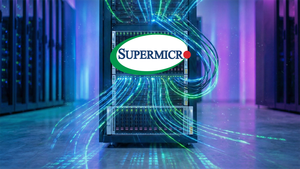Building infrastructure feels like solving a jigsaw puzzle with missing pieces. Many businesses struggle with outdated systems, unpredictable demands, and limited resources. These challenges slow progress and block opportunities for growth. Here’s a reality check: nearly 40% of global infrastructure requires urgent upgrades to meet today’s needs efficiently, according to the World Economic Forum. Ignoring this gap puts industries at risk of falling behind in technology and sustainability. This blog will discuss more effective ways to improve your core infrastructure. From digital upgrades to bold urban solutions, we’ll cover practical strategies you can implement right away.
Ready for fresh ideas? Keep reading!
Challenges in Modern Infrastructure Development
Modern infrastructure faces hurdles that test its strength at every corner. As needs grow and systems age, cracks begin to show in unexpected ways.
Technological Limitations
Outdated infrastructure systems often struggle to support modern demands. Legacy networks can’t manage the heavy data loads required for digital transformation. Slow adoption of new technologies creates bottlenecks, reducing productivity and growth potential. According to the CEO of Anteris, businesses that delay modernization face heightened operational risks due to outdated infrastructure and rising cybersecurity concerns. In some regions, limited access to high-speed internet stifles progress toward smart city infrastructure. Hardware compatibility issues also increase costs and operational delays. > "Technology should drive growth, not hinder it.".
Evolving Business Needs
Shifting demands challenge traditional infrastructure strategies. Businesses now require more adaptable and flexible systems to keep pace with rapid market changes. For example, the rise of digital transformation has pushed industries toward a versatile data infrastructure that supports growing operational complexities. Many companies also seek sustainable development solutions. Urban infrastructure must align with renewable energy goals while still supporting advanced technologies like AI-driven management systems. This dual demand requires infrastructures designed to handle both adaptability and environmental responsibility without compromising efficiency.
Key Innovations in Infrastructure Development
Modern tools breathe new life into how industries shape infrastructure. Businesses now adopt bold strategies to meet today’s fast-moving demands.
Digital Core Modernization
Updated systems reduce downtime, expand operations, and adjust to evolving needs with ease. Services like Base Solutions's IT support desk help businesses implement core upgrades that align with these goals, offering hands-on support during transitions. Replacing outdated systems lowers costs over time. For example, cloud-based platforms enhance flexibility for businesses managing extensive projects or modifying workflows. Adapting your core ensures future growth—stay prepared for tomorrow.
Smart City Infrastructure
Digital core modernization lays the foundation for smarter urban infrastructure. Cities worldwide now integrate technologies like IoT and 5G into their frameworks. Sensors monitor traffic, water usage, and energy grids in real-time. This approach improves resource allocation while reducing costs. Businesses benefit from more efficient operations within these cities.Smart buildings enhance urban landscapes further. Automated lighting, energy systems, and climate controls lower expenses for tenants. Public transport improved through AI-driven scheduling reduces commute times significantly. Such advancements increase property values and attract both investors and residents to emerging smart hubs globally.
Pervasive AI in Infrastructure Management
AI technologies now anchor integration in smart city systems. They don’t just monitor; they analyze data in real-time to predict failures and improve infrastructure management. Sensors can identify wear on bridges, detect energy leaks, or schedule road repairs before issues escalate. Such precision saves money while enhancing safety standards for urban areas. Businesses using AI-driven tools gain better control over operations. Predictive maintenance powered by AI and machine learning reduces downtime significantly, according to McKinsey, while saving costs and enhancing operational performance across industries. AI changes traditional approaches into more efficient and forward-thinking models of infrastructure planning.
Best Practices for Implementing Modern Infrastructure
Build systems that can adjust to unexpected challenges quickly. Create environments where progressive ideas grow and prosper.
Building Resilient Systems
Strong systems withstand change and recover quickly from disruptions. Businesses need resilient infrastructure that adjusts to evolving demands effortlessly. Flexible designs address unexpected challenges like sudden market shifts or cyber threats. For example, decentralized data hubs reduce risks by spreading resources across multiple locations. Invest in systems that grow with your long-term needs. Adaptable cloud-based solutions provide exceptional flexibility for growth or contraction as required by the business environment. Such resilience not only safeguards operations but also builds trust with stakeholders. Explore forward-thinking networks that align with these efforts in meaningful ways!
Developing Innovation Ecosystems
Foster collaboration between industries, governments, and tech leaders to drive advancements in infrastructure. Build environments where businesses can test and adopt advanced solutions like digital core systems and smart technologies. Such partnerships enhance growth and efficiency in urban infrastructure planning. Encourage cross-industry conversations to solve shared challenges like renewable integration or data management issues. Creating spaces for open dialogue often inspires progressive strategies that drive further development.
Conclusion
Modern infrastructure demands bold, practical strategies. Embracing new tools and smarter designs establishes stronger foundations for growth. Businesses that adjust quickly stay ahead in this rapidly evolving environment. The path forward is clear—modernize the core or risk falling behind.







